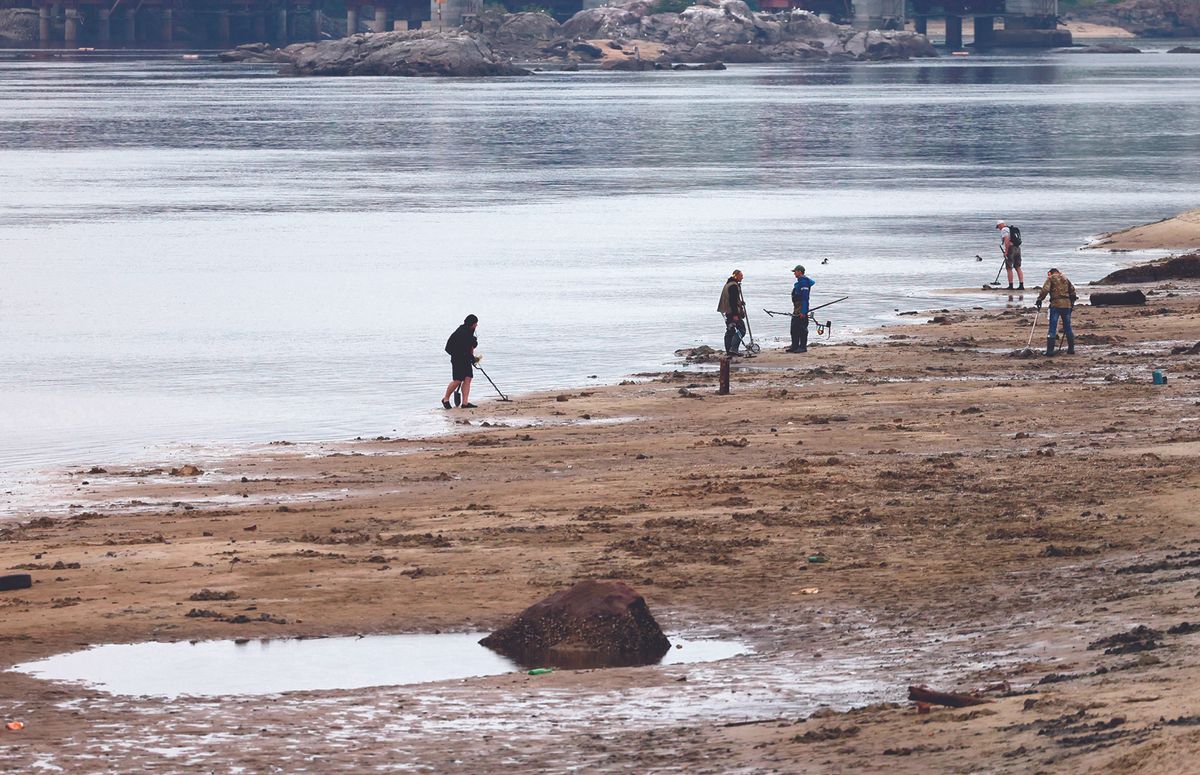A report released on 19 July based on "high-resolution satellite imagery" confirms flooding adjacent to the house museum of the self-trained Ukrainian artist Polina Rayko in Oleshky, Ukraine, following the destruction of the Nova Kakhovka dam last month.
Russia seized the strategic Dnieper River Dam on 24 February, 2022, the day it invaded Ukraine. Conflict Observatory, which released the report, is an independent project launched by the US State Department, which has been monitoring humanitarian violations by Russia and the damage and destruction of cultural heritage sites in Ukraine since then through the work of the Yale School of Public Health’s Humanitarian Research Lab, the Smithsonian Cultural Rescue Initiative, the Cultural Heritage Monitoring Lab (CHML) at the Virginia Museum of Natural History, PlanetScape Ai and other partners.
Katharyn Hanson, head of research at the Smithsonian Cultural Rescue Initiative (SCRI) at the Smithsonian Institution, tells The Art Newspaper that information gathered by participating organisations including the Ukraine Heritage Monitoring Lab (HeMo) narrowed down "the timeframe in order to focus our satellite imagery analysis." It confirmed ground reporting of flood damage via photos and videos made by the Polina Rayko Foundation.
"We hope that our satellite imagery in this report provides additional information, documentation, and possible future evidence of the flooding damage" at the Polina Rayko museum, said Hanson.
In the report, satellite images marked with yellow arrows "show the museum and surrounding neighbourhood inundated by water" on 7 June. The home of Rayko, who died in 2004, was decorated with her artwork depicting flora, fauna, family members, and religious motifs on all the walls.
HeMo continues to document “the damage on the ground when possible and safety can be assured,” said Hanson. The flood severely affected Russian-occupied territory of Ukraine, including Oleshky. Conflict Observatory’s research follows a "rigorous chain-of-custody procedures for future civil and criminal legal processes under appropriate jurisdictions" as the case for war crimes trials against Russia grows.
Ukraine’s cultural heritage faces daily threats. Three museums in the historic Black Sea port city of Odesa were damaged by Russian bombing this week. The city's historic centre was granted Unesco World Heritage status earlier this year. In a statement on Friday (21 July), Unesco condemned the attack on cultural heritage.
Disputes about cultural funding in wartime have divided Ukraine’s leadership. The culture minister Oleksandr Tkachenko offered his resignation on Thursday, saying in a Facebook post that culture is no less important than drones since "culture is a shield of our identity and our borders."
Meanwhile, Ukrainian President Volodymyr Zelensky said in his nightly address to the nation that while culture is important, "now there are other priorities."
Heritage sites were immediately reported to be at grave risk following the disastrous bursting of the dam on 6 June, as archaeological artefacts were submerged in water and illegally excavated.
The catastrophe has destroyed homes, forced the evacuation of thousands of people and caused massive environmental damage. President Zelenskiy blamed Russia for the disaster, describing it as “an environmental bomb of mass destruction”, while Russia claimed Ukraine was responsible. The dam is under Russian control and therefore inaccessible to independent investigators, although mounting evidence suggests a deliberate explosion.
In the days after the bursting of the dam, the Khortytsia National Reserve warned of a “boom” in “black archaeology” on the park’s island terrain and called on the public to alert them to any “people with metal detectors or who are doing any excavations in the territory”. In a Facebook post, the reserve said that visitors who had found artefacts should “send us a photo with geolocation or bring [them] to the museum—so you can save it for future generations.”
The Ukrainian administration of the Kherson region, part of which is occupied by Russian forces, also issued a public appeal describing the significant threat to archaeological research in the area. Artefacts from the “unexplored mounds” of the Kherson Oblast were being “washed out of the ground and carried along the banks of the rivers and the Black Seaby a powerful current”, the administration said. “If you notice such objects, please immediately contact the Kherson Regional Museum of Local History.”
Several days earlier, while saving freshwater turtles from the seawater, rescue workers in Odesa, had come upon a historic amphora floating in the water, most likely carried there by the flood waters. They turned it over to the Kherson Museum, which described the find “as a great joy”
Ukraine’s Ministry of Culture and Information Policy reported that as of 13 June, 147 cultural institutions in the Kherson and Mykolaiv regions were at risk, “taking into account the territories temporarily not controlled by Ukraine”, and 20 were in areas of direct flooding. Immediately after the dam breach the ministry released a list of the most severely affected museums in and around the town of Nova Kakhovka, where the dam is located. Most, except for a museum of Cossack history in the village of Kozatske, are in occupied territory.
Kilian Heck, an art historian at the University of Greifswald in Germany, who helped create the Ukraine Art AidCenter network of art historians and experts in 2022 and recently published an anthology of Ukrainian art, says that the destruction of the dam “means a catastrophe for many cultural assets in southern Ukraine”. At risk are “hundreds of kurgans [ancient burial mounds] from the time of the Scythians”, and the archaeological sites in the Zaporizhzhia,Kherson and Mykolaiv regions, which are “currently plagued by thieves and grave robbers.”


